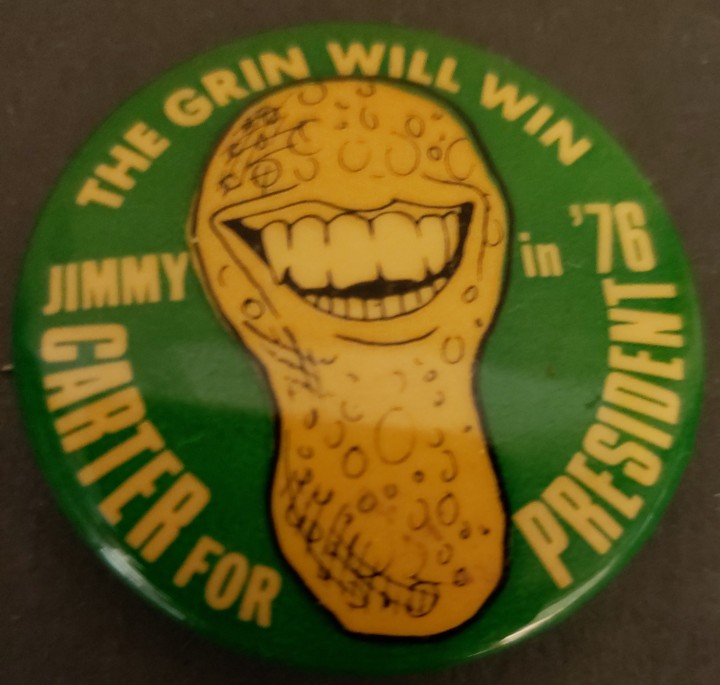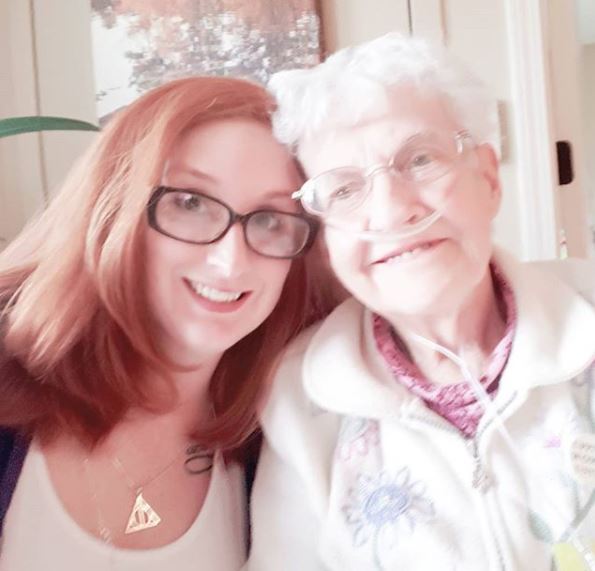My grandma emailed me and shared the first time she became politically active. It’s obviously amazing, so I’ll let her tell you about it in her own words in a moment. But now that I’ve been writing this blog for like, a full ten days, I thought it would be a good time to reflect on what I’ve learned (and I talked about it in therapy last night, so it’s nice and fresh.)
I always knew that my grandma was politically active, but I think I viewed it in the abstract. I would hear stories about it from time-to-time, but since we didn’t live right down the street like some of my other family members, I didn’t really ever see it first-hand. Sorting through all of these buttons made these stories seem more real to me.
I started this blog with the intention of looking into the history of the buttons, but I am realizing that the more interesting story is her story with the buttons. They aren’t all from campaigns or causes that she was involved with, but of the ones that were, I’d like to tell her story. We’ve got a date on Sunday to sit down and go through some of them.
The last thing I’ll say for now is this: researching these buttons, talking to my family and my grandma about her activism, and thinking about the way things are now has made me want to do something. Activism has changed a lot, it seems, and especially for millennials it has moved largely to the internet. I think I definitely fall into that category — I’ll happily defend any issue I believe in, as long as I don’t have to actually speak to anyone or put on real pants or leave my cats. And while it’s great to express your opinion on Facebook and Twitter, real change has always come from people who are willing to leave the house. So, I signed up to volunteer with Planned Parenthood yesterday (and shout-out to the wonderful staff at the Livonia location who might be reading this, we got pretty up close and personal today.) It’s no march on Washington, but it’s something.
And now, without further ado, onto a great story from grandma:
“Wow! Your acquirement of my button collection, has sent me on a trip down Memory Lane! I’m delighted that you got it and are interested in learning more about the various buttons.
Is there a button for Flavin and Morris for the Ferndale School Board? That is the first campaign in which I became politically involved, and I don’t remember if we had a button or not.
The situation:
My son, Rob was in 3rd grade, and was not learning how to read. He was a very bright child; but he was just not catching on! Then the Ferndale School District introduced a FEDERALLY FUNDED reading program – and with that program, Rob was learning to read!
The Ferndale School District includes part of Royal Oak Township – a black -community. Grant, an elementary school in the township, was all black. The federal government told the Ferndale school board to desegregate Grant school or lose federal funding – including the reading program that was helping Rob. Our school board told the feds where they could go with that money!
Well! I spoke at that meeting urging the board to desegregate Grant. Instead, they voted to keep the status quo. The Feds subsequently cut off funding to the district which, at that time was about, I think, $250,000.00/year – a considerable amount of money!
After that meeting, I was invited to attend another meeting with a group of people who were looking to replace that school board which would sacrifice our kid’s education for their own racist reasons. That’s when I became politically involved.
It took years of campaigns to change the board (7 seats; with 2 up for election every year). We’d win two, then lose one, etc. etc., but eventually we got a majority – and then the whole board!
Rob learned to read through that federally funded program– and now, instead of being a drop-out, he is a physicist who works for the U.S. Army.
I thank God for allowing me to see the results of all that time and all that work.”



















 (Permission to use with credit to
(Permission to use with credit to 







